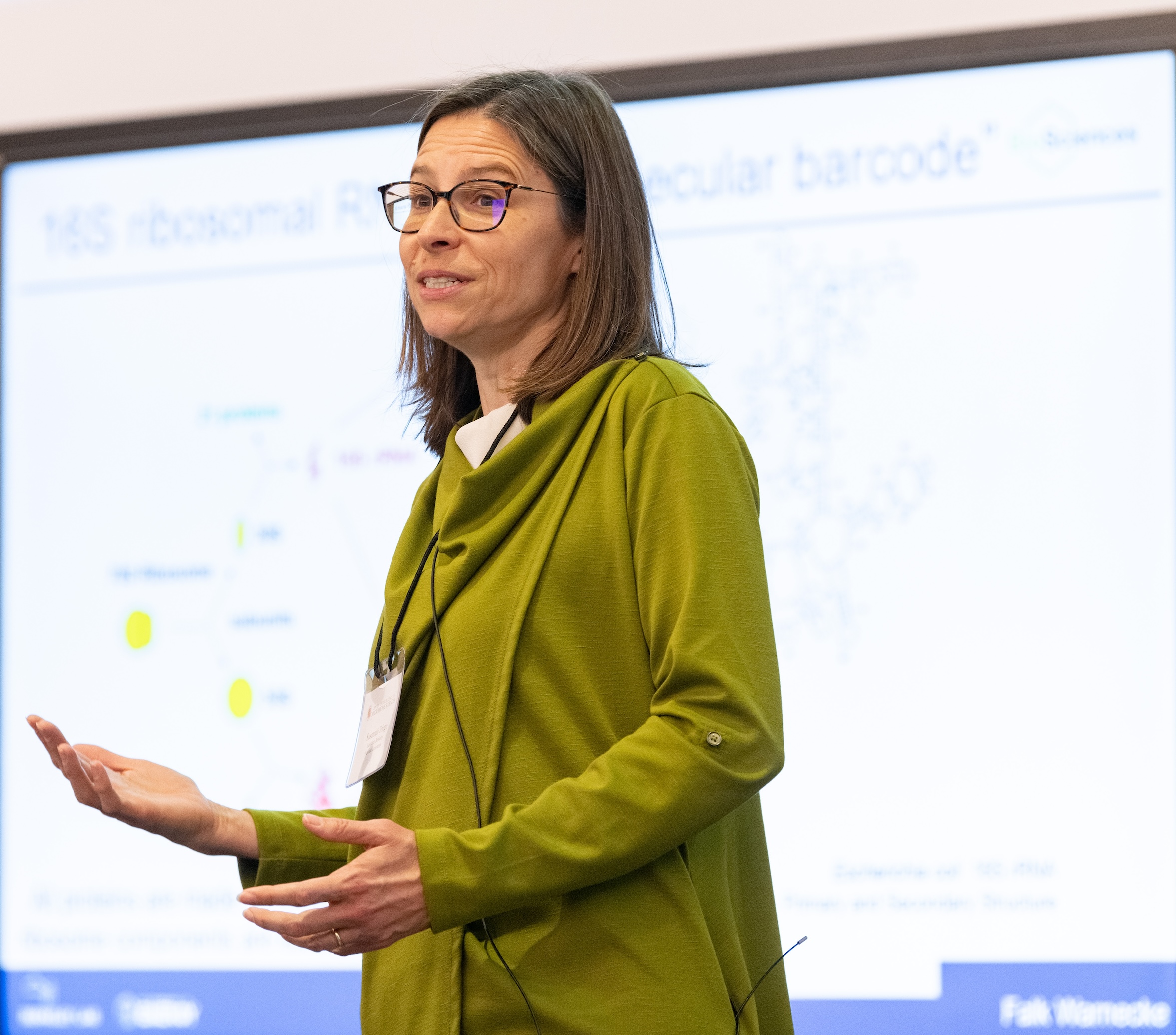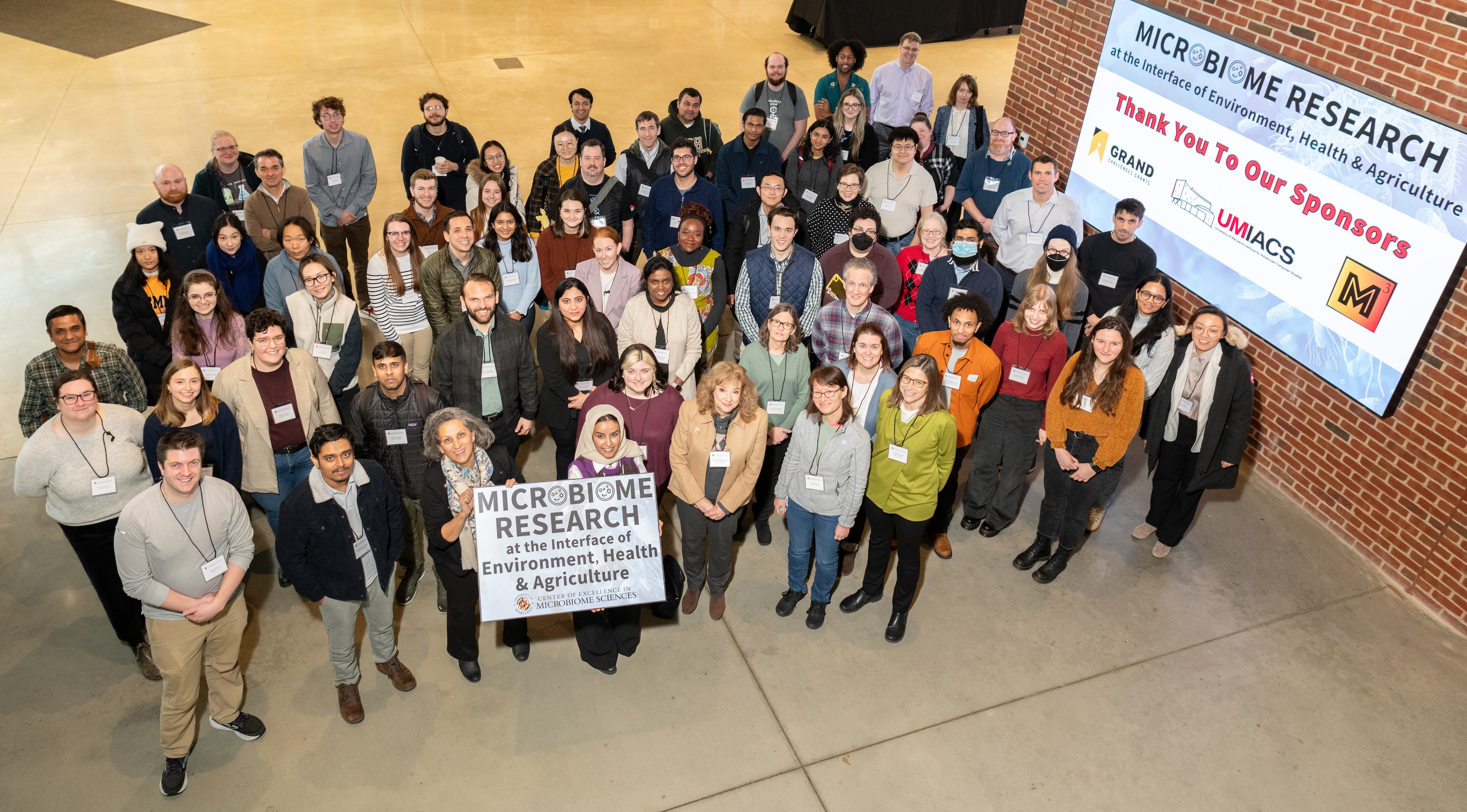
The University of Maryland will host an international conference this week that explores the latest in computational tools and methods used for research involving genomics and systems biology.
The 25th annual Wonderful Algorithms for Bioinformatics conference (WABI 2025) joins 65 researchers from around the world for a series of talks and networking events focused on discrete algorithms and machine learning tools that can address important challenges in molecular biology.
Held every other year in the United States, this year’s conference will take place in the Brendan Iribe Center for Computer Science and Engineering from August 20–22.
Mihai Pop, a UMD professor of computer science and the local chair for the conference, says that as the volume of biological data continues to expand due to modern sequencing technologies, discovering newfound methods of collecting, processing and analyzing that data have become imperative.
He notes that current bioinformatics research may easily involve petabytes of data (1 petabyte = 1 million gigabytes), with other computing challenges arising in the form of capturing genomic diversity within human populations, as no existing solution effectively handles both vast amounts of data and genomic variation.
“Talks at WABI present potential solutions to these challenges by describing new methods for managing large datasets through advanced data structures and models for storing and analyzing pangenomes—collections of closely related genomes such as those from multiple humans,” Pop says.
Pop also acknowledges WABI’s value for students and early-career researchers.
“Science is a team sport,” he says. “Graduate students will learn to engage in scientific dialogue, expand their professional networks, and present their own research while receiving feedback on future work and career plans.”
The conference’s keynote speakers are Christina Boucher, an associate professor of computer and information science and engineering at the University of Florida, and Benjamin Langmead, a professor of computer science at Johns Hopkins University.
Langmead’s talk, “We Are What We Index: A Primer for the Wheeler Graph Era,” will explore pangenome graphs—network structures that compress multiple genomes—and new methods for their indexing and representation.
“Pangenomes are collections of genomes from many individuals that avoid the biases of relying on a single reference genome,” Langmead says. “It’s like training a computer to recognize dogs—you need many pictures, not just one, because breeds vary widely.”
Boucher’s presentation, “Recursive Parsing and Grammar Compression in the Era of Pangenomics,” will highlight innovative algorithmic approaches that enable the simultaneous analysis of thousands of genomes. She says she looks forward to engaging with the WABI community to explore the challenges and opportunities ahead.
Rob Patro, an associate professor of computer science and co-chair for WABI, notes that the conference aligns closely with the missions of the Center for Bioinformatics and Computational Biology (CBCB) and the UMD Center of Excellence in Microbiome Sciences, both of which promote computational biology research and foster scientific exchange.
Both Patro and Pop are active in CBCB and Pop is the co-director of the microbiome center.
Patro says that WABI 2025 marks a milestone for UMD and the broader research community.
“WABI was one of the first conferences I attended as a graduate student,” he says. “Bringing it here is an honor and a great opportunity to showcase our leadership in this dynamic field.”
—Story by Melissa Brachfeld, UMIACS communications group








 Hannah Zierden
Hannah Zierden E.coli bacteria and an electronic device might seem to have little in common, but in a recent experiment, University of Maryland researchers linked them into the first closed-loop system able to communicate across the technological-biological divide.
E.coli bacteria and an electronic device might seem to have little in common, but in a recent experiment, University of Maryland researchers linked them into the first closed-loop system able to communicate across the technological-biological divide. More than 70 people braved stark wintry conditions on January 16 to attend a research symposium at the University of Maryland that explored the world of complex microbial communities.
More than 70 people braved stark wintry conditions on January 16 to attend a research symposium at the University of Maryland that explored the world of complex microbial communities. A morning keynote talk by
A morning keynote talk by  Additional attendees included faculty, postdocs and graduate students from the University of Delaware, Towson University, University of Maryland School of Medicine, and the University of Maryland, College Park.
Additional attendees included faculty, postdocs and graduate students from the University of Delaware, Towson University, University of Maryland School of Medicine, and the University of Maryland, College Park.